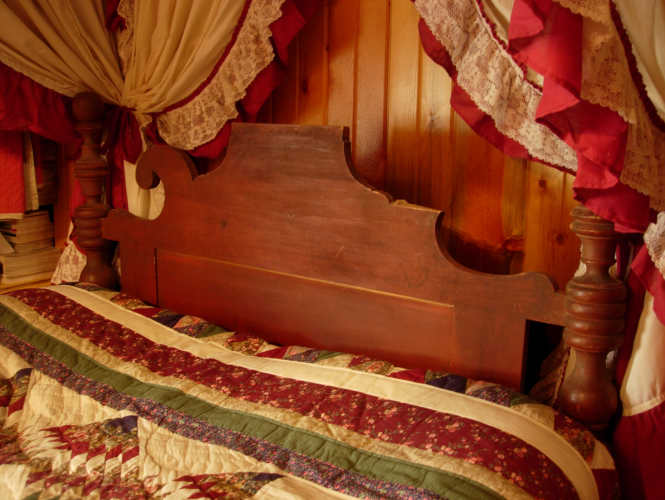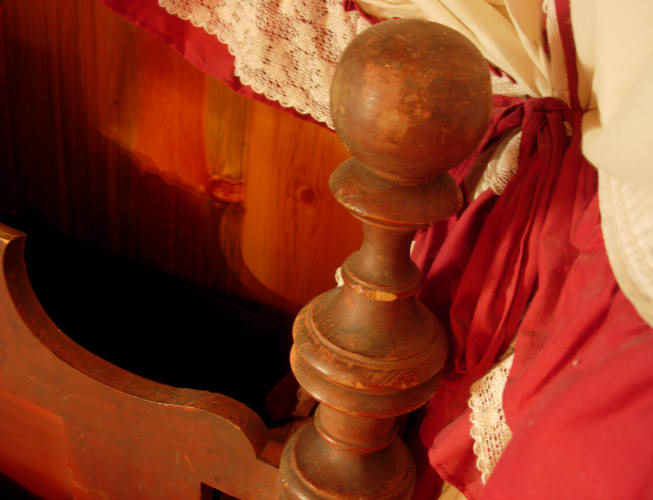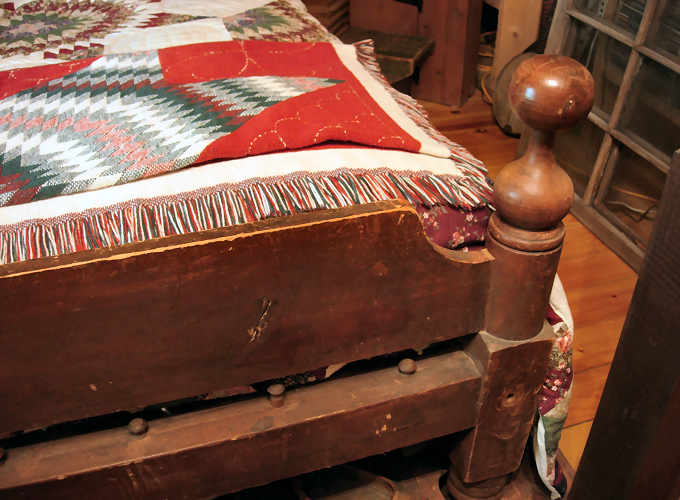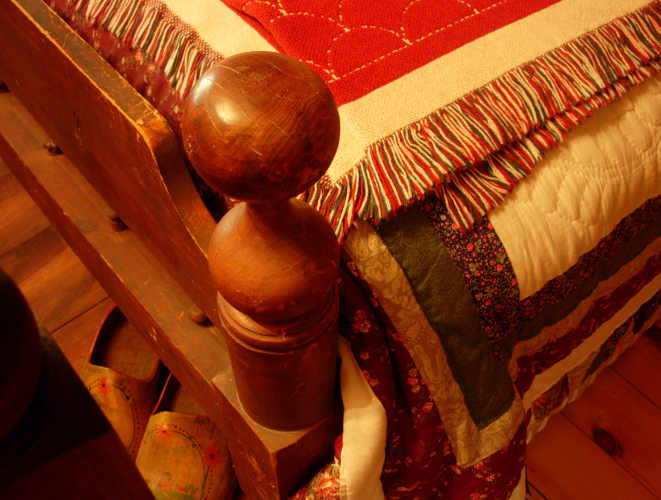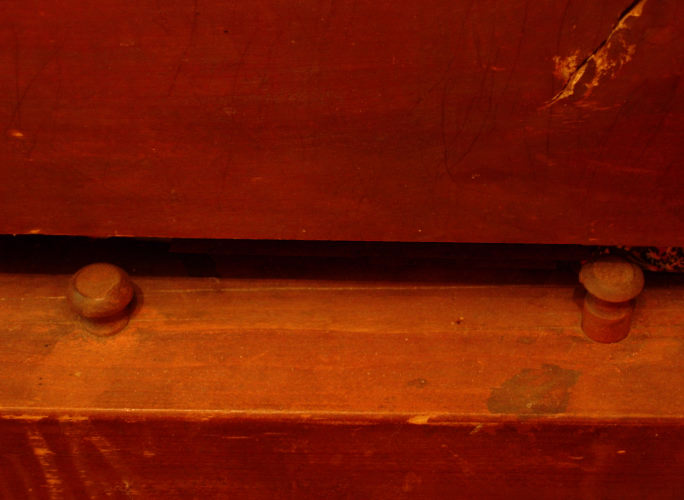

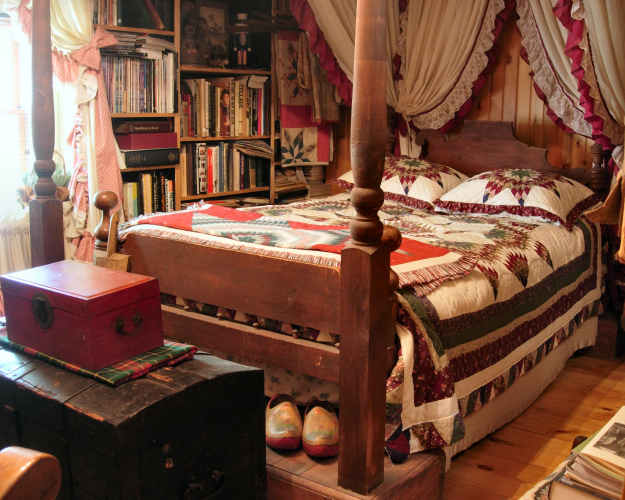
| The low-post rope bed was the most common type of bed to be found in rural Pennsylvania from the late-1700s to the mid-Nineteenth Century. This type of bed is called a rope bed because the mattress was supported on a criss-crossing network of ropes. Along the top edge of the framework are little knobs around which ropes would be looped and strung from side to side and headboard to footboard. A thin mattress stuffed with straw and feathers would be placed overtop the network of ropes. Although the bed would have been a welcome refuge from the day's toil, the ropes would surely have been felt through the thin mattress. The low-post rope bed had a headboard and a footboard which were morticed tightly into the corner leg/posts. The side rails were detachable in the sense that they were, like the head and foot boards, attached to the corner leg/posts by a mortice and tenon joint. But whereas the joints made between the head and foot boards and the corner leg/posts were then made solid by pounding a wooden dowel through the joint, the joints made between the siderails and the corner leg/posts were tied together by a removable metal pin. This allowed the bed to be taken apart and moved easily. I had to alter this rope bed in order to be able to sleep in it. The side rails of the framework were only five feet in length, making it about a foot too short for me to comfortably lie down in. I substituted two four-by-four posts for the original two side rails. I also attached metal brackets onto the new siderails; they were designed to support a new box springs and mattress without using ropes. Then, because I wanted the effect of a tester bed (commonly called a canopy bed), I built a high-post/tester structure inside which the original bed would stand. This set-up allows me to have the tester bed I want, while retaining the original beauty of the antique low-post bed. The picture directly below shows the headboard. Notice the inset panel construction which replaced the single large, solid plank of wood found on headboards of beds from the Eighteenth Century. The single, large plank had a tendency to split or warp. The employment of an inset panel gave the bed's headboard the look of a large plank, while allowing for "breathing" room. On this bed, one of the decorative elements of the headboard was broken off at some early date. The break's edge, originally rough, has become worn smooth over time. I was tempted to have the piece 'repaired' by having the decorative element replaced, but never did because I kind of like this evidence of the bed's use. |
